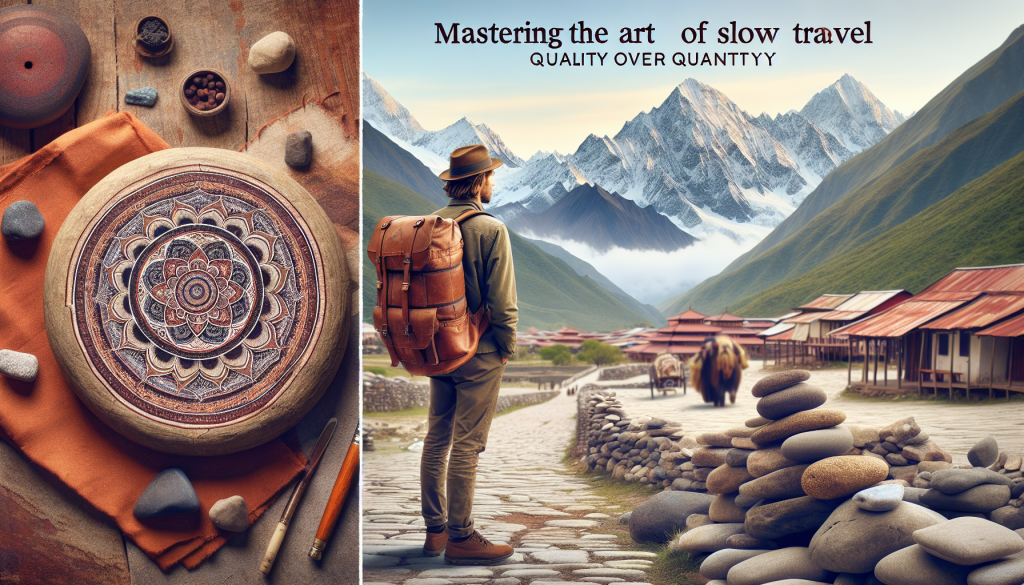
Mastering the Art of Slow Travel: Quality Over Quantity
Mastering the Art of Slow Travel: Quality Over Quantity
The world today moves at a fast pace, with everything from technology to transportation advancing at a rapid speed. It’s no wonder that the way we travel has also changed, with tourists often taking a whirlwind tour of multiple destinations in a short period of time. However, there is a growing movement towards slow travel, which focuses on immersing oneself in a destination and truly experiencing it. In this article, we explore the concept of slow travel and how it can enhance your travel experience.
What is Slow Travel?
Slow travel is a mindset that advocates for a slower, more deliberate way of traveling. It encourages travelers to take their time and truly immerse themselves in a destination, rather than rushing from one place to another. The goal is to have a more authentic, meaningful and less stressful travel experience. It’s about quality over quantity, choosing to dig deeper into a few places rather than skimming the surface of many.
The Art of Slow Travel
Mastering the art of slow travel means learning to be present and appreciating the journey, not just the destination. It’s about savoring the little moments, like chatting with locals, trying new foods, and getting lost in the streets of a new city. It also involves being open to unexpected experiences and detours, rather than sticking to a rigid itinerary. While it may seem counterintuitive, slowing down can actually allow for a more enriching and less stressful travel experience.
Benefits of Slow Travel
One of the main benefits of slow travel is that it allows for a deeper understanding of a destination. When you take the time to really explore a place, you have the opportunity to learn about its culture, traditions, and way of life. Additionally, slow travel often leads to more meaningful connections with locals and other travelers. It’s easier to make genuine connections when you’re not in a rush and open to slowing down and engaging with your surroundings.
Another benefit of slow travel is its environmental impact. With less jet-setting and more local exploration, slow travel can help reduce the carbon footprint of your travels. It also supports local economies by spending more time and money in a few places rather than spreading it out over multiple destinations.
Tips for Mastering Slow Travel
If you’re new to the concept of slow travel, here are a few tips to help you get started:
- Choose a destination with a rich history and culture, and take the time to learn about it.
- Don’t try to cram too many activities into your schedule. Allow for plenty of downtime to relax and connect with the destination.
- Avoid tourist traps and seek out authentic experiences instead.
- Stay in a local Airbnb or guest house to get a feel for daily life in the destination.
- Don’t be afraid to explore off the beaten path and be spontaneous.
In Conclusion
In a world where fast-paced travel is the norm, slow travel offers a refreshing and rewarding alternative. By mastering the art of slow travel, you can truly immerse yourself in a destination and create unforgettable memories. Whether it’s through meaningful connections, deeper cultural understanding, or simply enjoying the journey, slow travel offers a more authentic and fulfilling travel experience. So next time you plan a trip, remember, quality over quantity. Slow down, and enjoy the ride.
